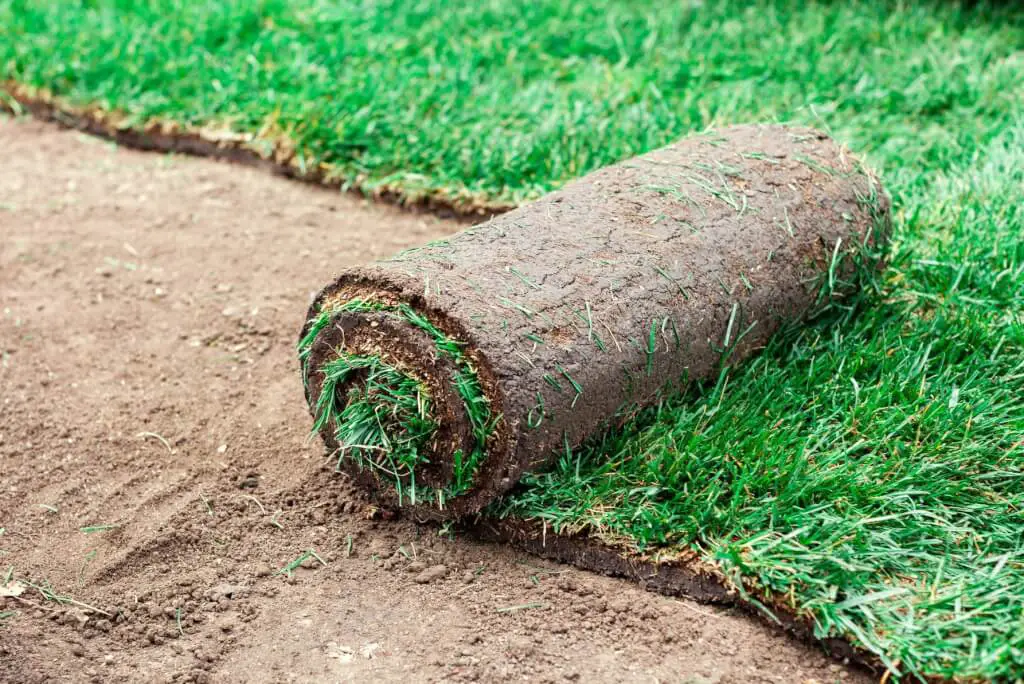Nothing gives homeowners more pleasure than a well-kept green lawn. A lush lawn will enhance your property’s curb appeal.
So, what happens when the grass on your lawn begins to wilt, turn a sickly yellow color, or thin out?
One exceptional way of addressing this type of issue and restoring your home’s lost glory is laying sod over your existing lawn.
Laying sod over an existing lawn is no mean feat and can prove challenging even for professional landscapers. This begs the question, should you mow your lawn and lay the fresh sod right on the grass? Or is it recommended to entirely pull the old grass and lay the sod on bare soil?
Can You Lay Sod Over Existing Grass?
For your sod to thrive, it has to entrench a robust root system. In addition, the new lawn will need sufficient nutrients. The best way to go about it is by laying it flush upon the soil.
In this way, the roots will catch fast, and nutrients will move through them.
So, is it a bad idea to install sod over your existing lawn?
4 Reasons Why it’s Not Advisable to Lay Sod Over Existing Grass
Laying new sod on existing grass can destroy your lawn and make all your hard work amount to nothing. Here are some reasons you shouldn’t place your sod over old grass.
1. The Sod Will Find it Hard to Take Root
If you lay sod over your old lawn, the roots of the grass will struggle to reach the soil. Consequently, your new sod will turn yellow and die away in a matter of weeks.
Ultimately, you will have to replace the sod and get rid of the old grass.
2. Prevailing Soil Problems
Do you know why your patch of lawn dried up in the first place? Maybe the soil is poor or compacted? Or perhaps it is diseased or crawling with insects and pests?
Either way, the fresh sod will not thrive any better than the old grass if it is laid on the same old spot regardless of the lawn maintenance regimen.
3. Old Weeds May Reappear
After laying sod on the grass, in some cases, the grass will ultimately wither and decompose; but weeds are a different matter altogether. Weeds are incredibly resilient. They will probably emerge through your new sod.
By skipping the process of eliminating the existing weeds and grass, you’ll still have to pull them out later after you’ve laid the sod, leading to possible damage.
4. Your New Sod Won’t Look as Good
Laying fresh sod over your existing lawn will ruin what could otherwise have been a new outdoor space. This is especially true if you’re only laying sod in some areas of your yard.
Even if the sod flourishes (which isn’t a guarantee), it will be taller than the rest of your lawn, resulting in an uneven look.
How to Lay Sod
-
Eliminate the Existing Grass
To get rid of old grass, use a rototiller coupled with a rake if the grass is too thin. After digging up the grass, rake all remaining debris, including the roots. What if the grass is considerably thicker, or you intend to lay sod on a substantial part of your lawn?
In this case, renting a sod cutter is a great idea to extract the existing grass in strips and handle more debris. In addition, it pays to strip an inch or so of the topsoil to ensure the fresh sod is even with the rest of your lawn. You can even use a mower for better results.
-
Prep the Soil
Tilling the soil to untangle it and fragment the solid chunks is next. Loose soil helps the roots to take. Ensure that you rake the soil to even the surface. Raking makes the sod seem flat with no bumpy spots.
Add some starter fertilizer to the topsoil before watering it. Finally, you can lay your roll of sod.
-
Lay Down the Sod
Begin flush against your lawn’s edge and unroll out the sod in parts. If your lawn is sloping, lay your sod horizontally for better water retention. Make sure the sections of sod are in full contact with the soil.
Next, lay the next section flush against the preceding one, with no space between them. Proceed until the whole lawn is covered with new grass. Lastly, trim the remaining sod to eliminate overlapping sections.
-
After Laying the Sod
After you’ve laid the sod, use a sprinkler to water it a few times a day for 2-6 weeks until it takes root. Don’t step on the sod for a few weeks after laying it to protect the forming roots from damage.

